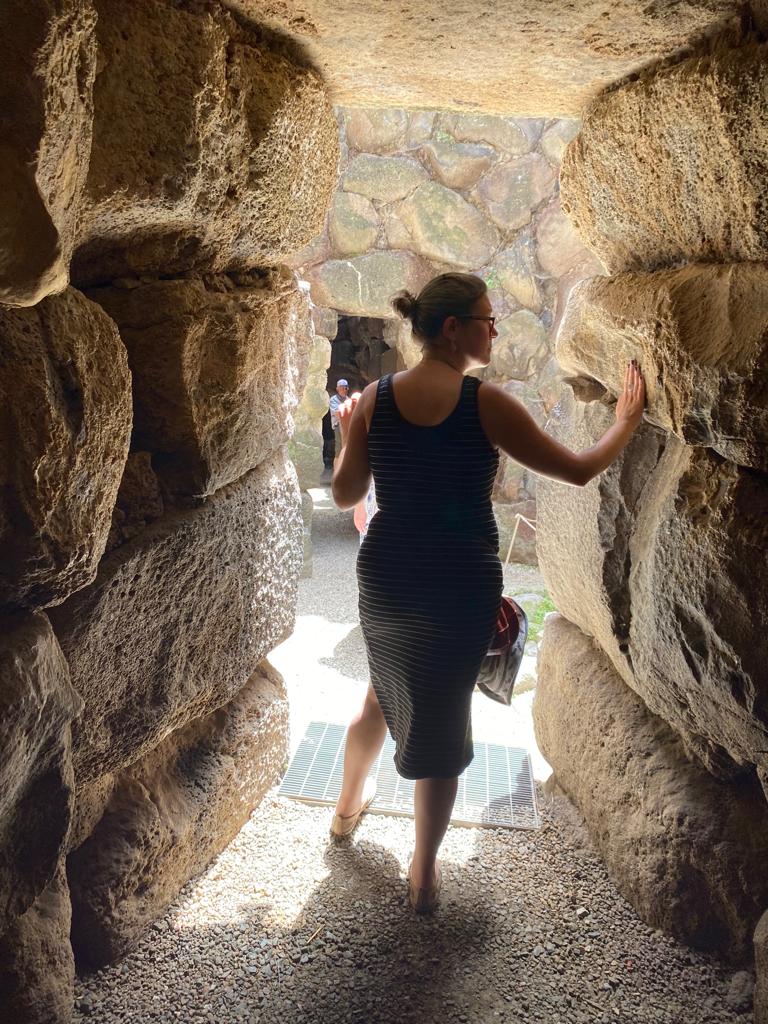
Welcome to a curated collection of my writings and recordings on Sardinia, where the rich tapestry of nature, ancient histories, and spiritual landscapes unfolds. This is the time of year when I get a lot of requests and questions from folks about traveling to Sardinia, so I am posting everything in one place for easy reference.
Having lived here for several years and spending as much time as I can (as an independent researcher/writer and mom of young children) exploring the north of the island, I’ve gathered a wealth of knowledge and experiences perfect for those seeking to go beyond the famed beaches to connect deeply with this magical island.
I have been fortunate to share this mysterious island I now call home with people I adore. I have found showing people the hidden gems of the island so rewarding. I have started to see myself as a kind of ambassador of this place, and feel the profound honor it is to share about this hidden gem with the English-speaking world and I look forward to the ability to do more of that over the years.
I’ve also met new friends—friends of friends who have come, who have gotten in touch, and who have been able to meet up and forge new relationships. I also hope this continues for many years to come.
Whether you’re planning a visit or just dreaming from afar, here’s everything you need to immerse yourself in the ancient, enchanting spirit of Sardinia.

dear friends who have come to visit & explore the magic with me

with the fam- 2023
Of course, it is my family that has inspired my life here in Sardinia, especially my Sardinian husband and our children. It has been a privilege and a joy to watch them grow up in their ancestral homeland, and I will be forever grateful to the spirit of this island I know as Nonna Sardinia for this beautiful life.
So, without further ado- here is my Sardinia collection of resources.
BLOG POSTS
Many people, both here in Sardinia and back home in the States, wonder why we moved our family of five to Sardinia. Even though people move to different cities or parts of their countries every day, people still marvel when you move continents. In this article, I go into some of the main factors that prompted the move.
Five Years In: Why We Moved to Sardinia—And What We’ve Learned Along the Way
Then, five years into the move, I followed up with another post to share some of the reflections and lessons learned so far. This is a vulnerable piece and likely not your typical post about a family’s experience moving abroad.
2- Taking a Walk in our Sardinian Neighborhood
When I move to a new place, one of the first things I do is take a walk to get the lay of the land and get to know it. Over time and many walks later, traversing all the seasons, I learn more about how the land functions, and eventually, I understand my part in how, by working together with the land, I can help to preserve it. In this article, you will meet some of the flora and fauna in Sardinia.
 showing my dear friend one of my favorite nuraghe
showing my dear friend one of my favorite nuraghe
3-Sardinia, Land of Many Faces
Sardinia is a unique place with many faces. As you drive around the Island, you will see many sleeping giants, their faces still etched in the rocks, which jut up at all sorts of precarious angles across the landscape. The rocks and mountains have been shaped over millennia by gale-force winds, and they take on the shape of mystical beings. It looks like they’ve all just gone to sleep until they are needed or remembered. In this article, I go deeper into Sardinia, the micro-continent, and how the spirit of the land, who I call Nonna Sardinia, is one of my greatest teachers. Learn more about Sardinia’s megalithic structures: Nuraghi, Tombe dei Giganti, and Domus de Janas.
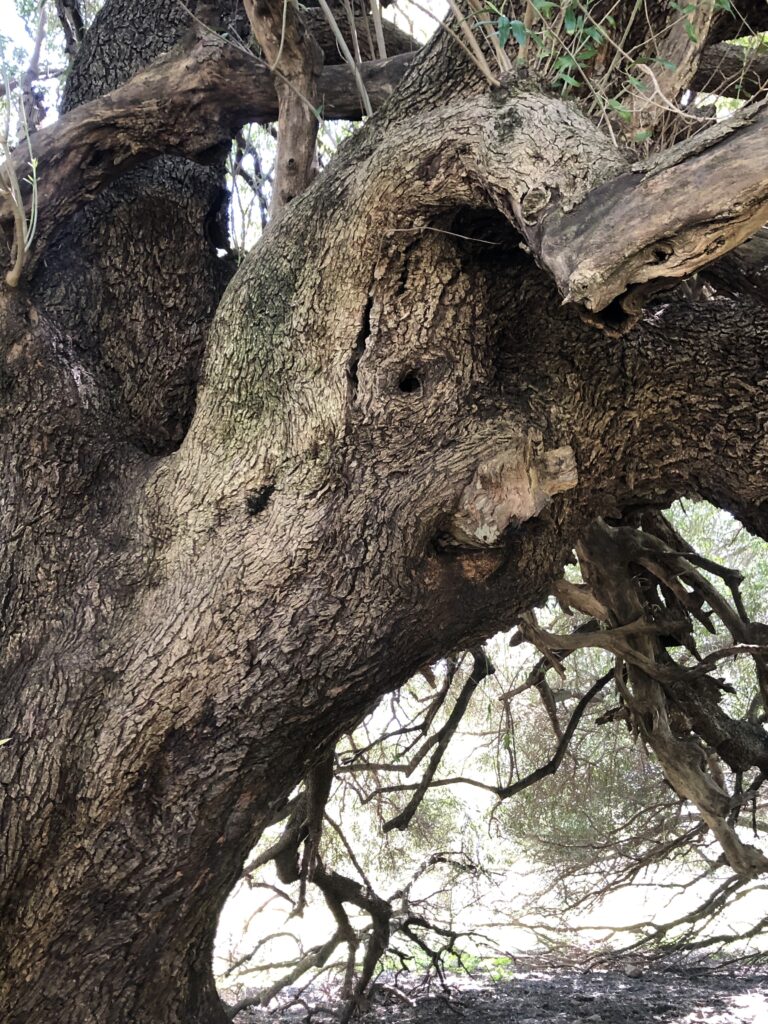
In Sardinia, the faces of the land spirits are everywhere
4- Sardinia’s Ancient Olive Trees
One of the places I often recommend people to visit is the Olivastri Millenari di Santu Baltolu, or the ancient olive trees at Santu Baltolu. These ancient olive trees live just outside the village of Luras, in Gallura, the northern part of the island. They are estimated to be between 3,000 and 5,000 years old, respectively. That means the oldest, named S’Ozzastru by locals (which in Sardinian means simply “the olive tree”), was probably a sapling when the construction of Stonehenge was beginning. In this article I talk about my experience with the trees.
5- The Mysterious Domus de Janas: Unveiling Sardinia’s Fairy Houses
Another type of megalithic structure people are interested in when it comes to Sardinian history are the Domus de Janas, or “Fairy Houses.” Yet the story of these ancient and mystical places is still shrouded in mystery. In this article, we explore the Domus de Janas, the abodes of fairies or witches, linking history, mythology, plant magic, and the mystical world of the ancestors.
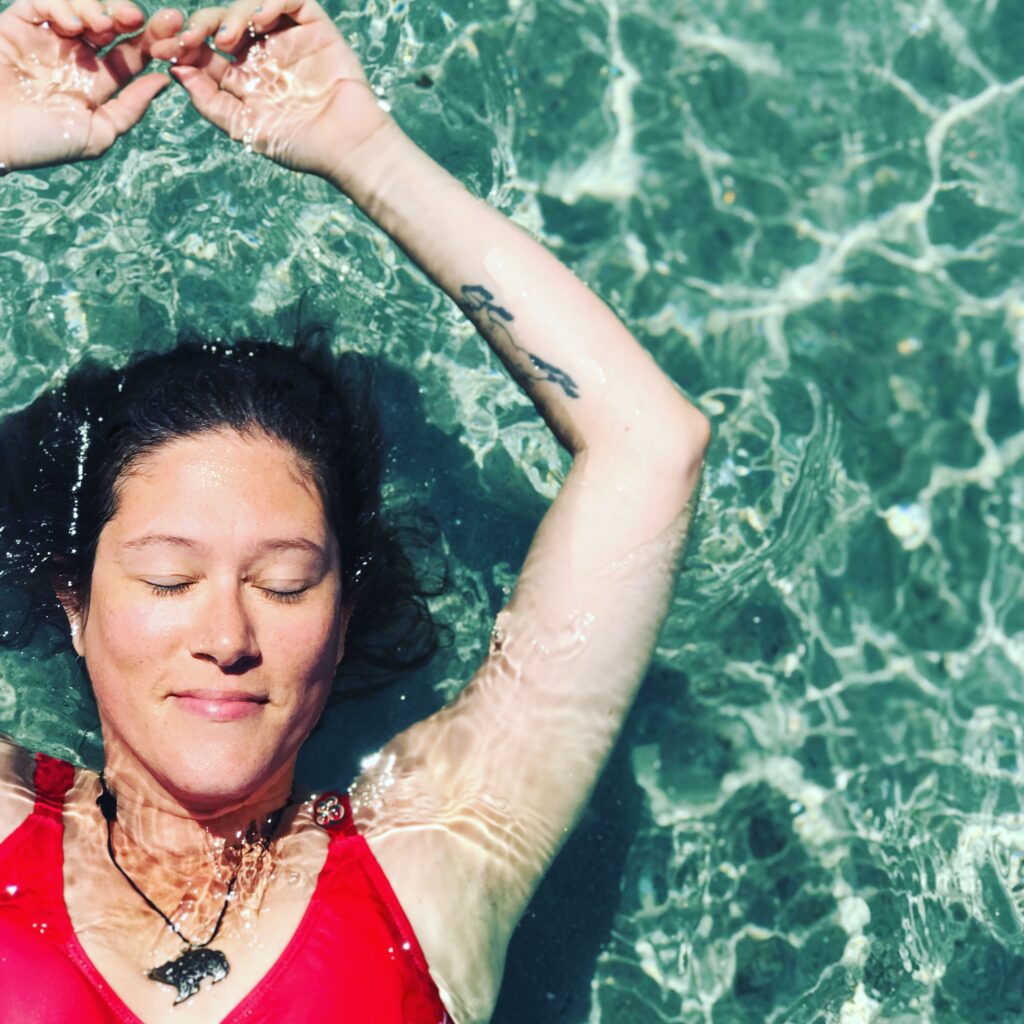
6- The Blue Zones and Mediterranean Diet Paradox Series
Lots of folks mention The Blue Zones or the Mediterranean Diet in their correspondence with me. In this section, I will share an article series I have written that covers these topics and so much more.
This personal article has been read by thousands of people, and it has helped many folks evaluate their relationship with food and escape the harmful dogma of diet culture. The Mediterranean Diet is touted as one of the healthiest in the world. Diet culture is rampant in North America and other parts of the Western world, and it hasn’t done us any favors. It has created a culture focused on body image and the goal of achieving perfect health.
Eat Like An Italian: Part 2: The Real Mediterranean Diet (What About The Carbs & Gluten?)
Studies show that The Mediterranean Diet is one of the healthiest in the world. Despite a diet laden (and I really do mean laden) with carbs, Italians can expect to live well into their eighties. On average, they have better heart and mental health than Americans, Canadians, and Brits. Italy has often topped the charts of The World’s Healthiest Countries. So why are Americans so afraid of carbs?
Part 3: Live Like a Sardinian: The Key to Longevity
In Sardinia, people tend to live longer than in other parts of the world, and everyone from researchers, to famous actors, want to know why. Likely it’s a combination of factors: diet, environment, and lifestyle; all vital components of a traditional way of life. In this article, I talk about the Blue Zones and try to break it down a little and clear up some misconceptions along the way.
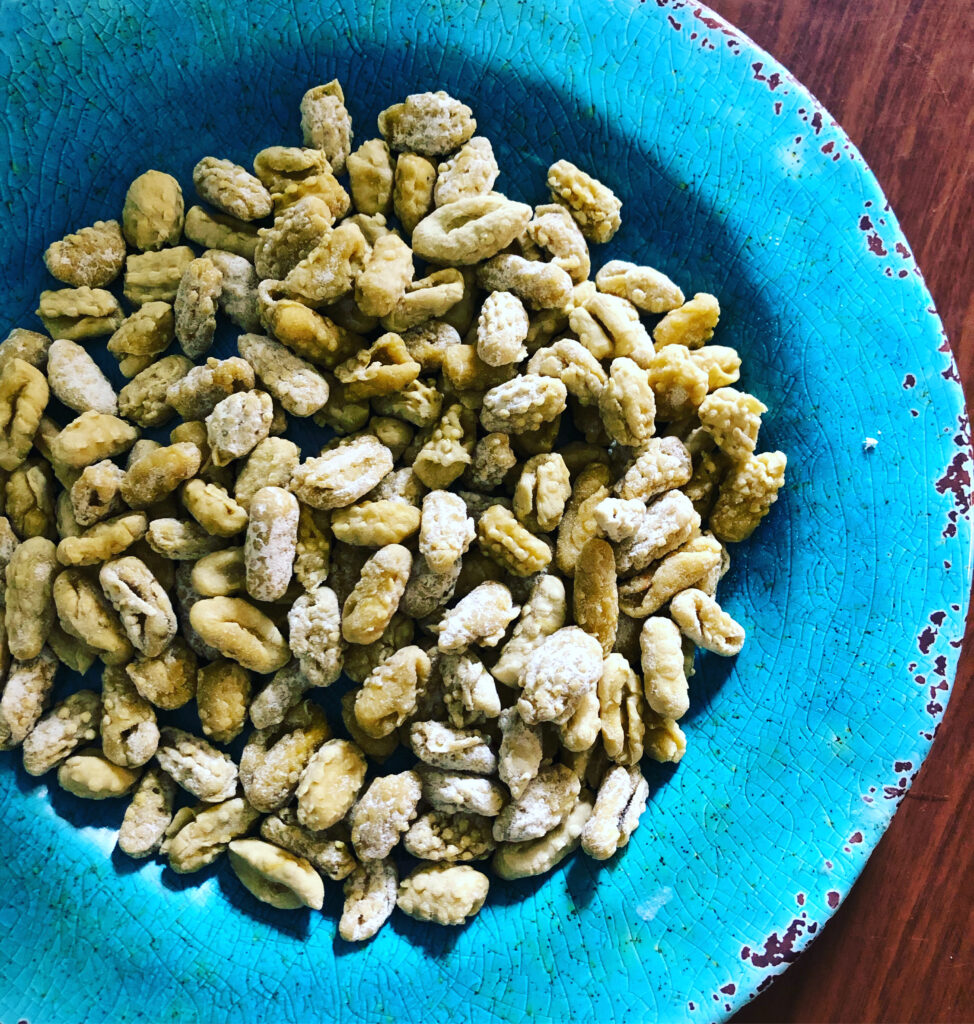 homemade malloreddus
homemade malloreddus
Traditional Sardinian Food: Malloreddus and Maialetto
Traditional foods tell us so much about the geography and history of a place, and Sardinia is no exception. Sardinia has spent most of its history isolated from the mainland and has a history of invasions and colonization beginning with the Phoenicians in the 9th century (BCE) to the Romans, Arabs, Northern Italians (Genoese and Pisans) and finally the Spanish who kept Sardinians under feudalism.
During the Aragonese rule, raids increased exponentially while Sardinians lived in the crossfire of larger political motivations, paying a dear price in loss of human life and livelihood, especially fishing activities. Things did not improve under the rule of the House of Savoy. Sardinians lived under a feudal state imposed by invaders until the end of the 18th century, almost 500 years after it was abolished in much of Europe.
In resistance, the native Sardinian people moved inland creating strong bases of tradition in the interior mountainous regions, like Barbagia which has an insular history. Read more about this in the article.
7- Sa Dia De Sa Sardigna (Sardinia’s Day)
Chickpeas play a dramatic role in Sardinia’s fight for freedom. This humble bean was the key to a successful rebellion of native Sardinians over their oppressive rulers from the Italian mainland.
The rebellion gained the people independence from the House of Savoy, finally breaking the bonds of nearly 100 years of feudalism in 1796.
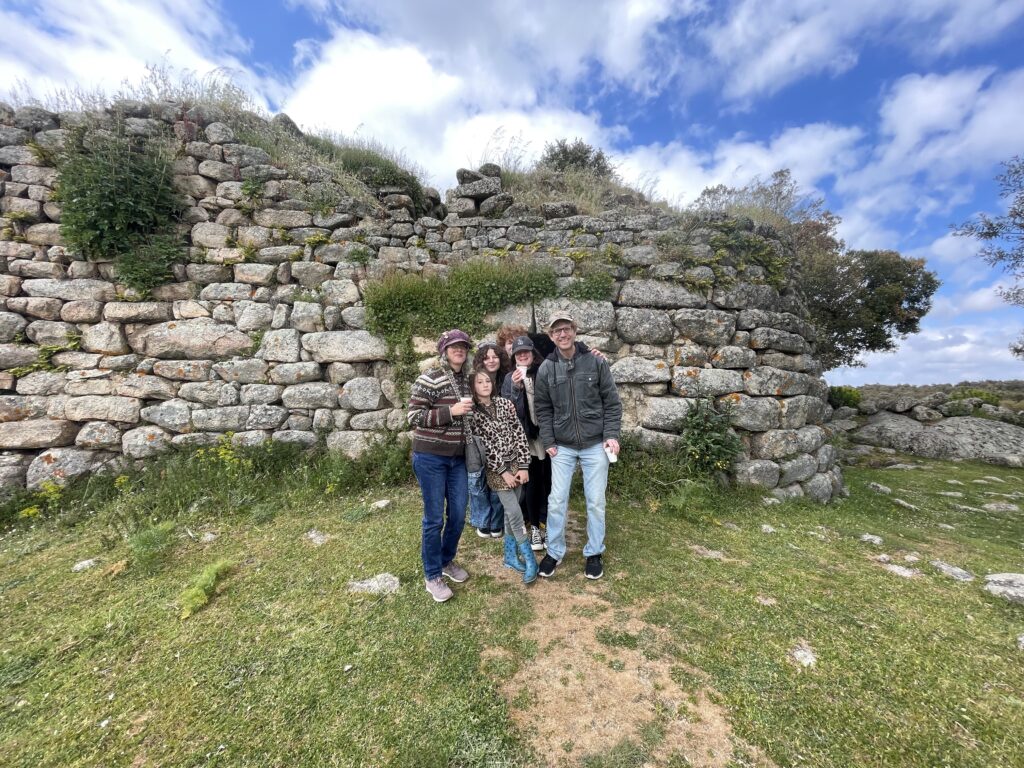 showing some of my favorite people my favorite places in Sardinia
showing some of my favorite people my favorite places in Sardinia
PODCAST EPISODES
1- Sardinia: Food. Land. Tradition. Magic
Sardinia is one of my great teachers for how to live a life of purpose and meaning. She has given me an inner strength that starts at the core of my being, lit up like a fire in my belly. She is the giver of second chances. If you want to hear me talk about my relationship to this ancient landscape, listen to the podcast episode.
2- “My Family’s Journey To The Blue Zone” – An Interview With Jenn Campus
From the I’m Moving to Italy podcast with the incredible host Nathan Heinrich. In this episode, I discuss some of the challenges I have faced since moving to Sardinia and why I would never live anywhere else.
3- The Bones Remember: Answering Ancestral Longing as a Cultural Orphan
In this soulful and reflective episode, I share the winding path that led me to Sardinia, tracing a journey that began long before I ever set foot on the island. Through story, ancestral memory, and lived experience, I explore the concept of cultural orphanhood—what it means to feel disconnected from both the land of your birth and the ancestral homelands you’ve never known.
I speak about the layered experience of returning to Europe as an American of European descent, and the grief that can arise when you realize how much was lost—or mocked—through assimilation.
I reflect on being adopted, and how that shaped her understanding of belonging; about hearing a message from the land itself; about the difference between ethnicity and nationality; and about the mythic memory that lives in our blood, in our bones, in the land.
I also share the very real challenges of life in Sardinia—language barriers, social isolation, neurodivergent parenting in a traditional village—and the unexpected gifts that came from being held by the land when the community couldn’t.
This episode is a love letter to the ones who left, the ones who stayed, and the ones who’ve come back, not to reclaim, but to remember.
ANIMIST ATLAS: A GUIDE to MINDFUL ROAMING & IMMERSIVE TRAVEL
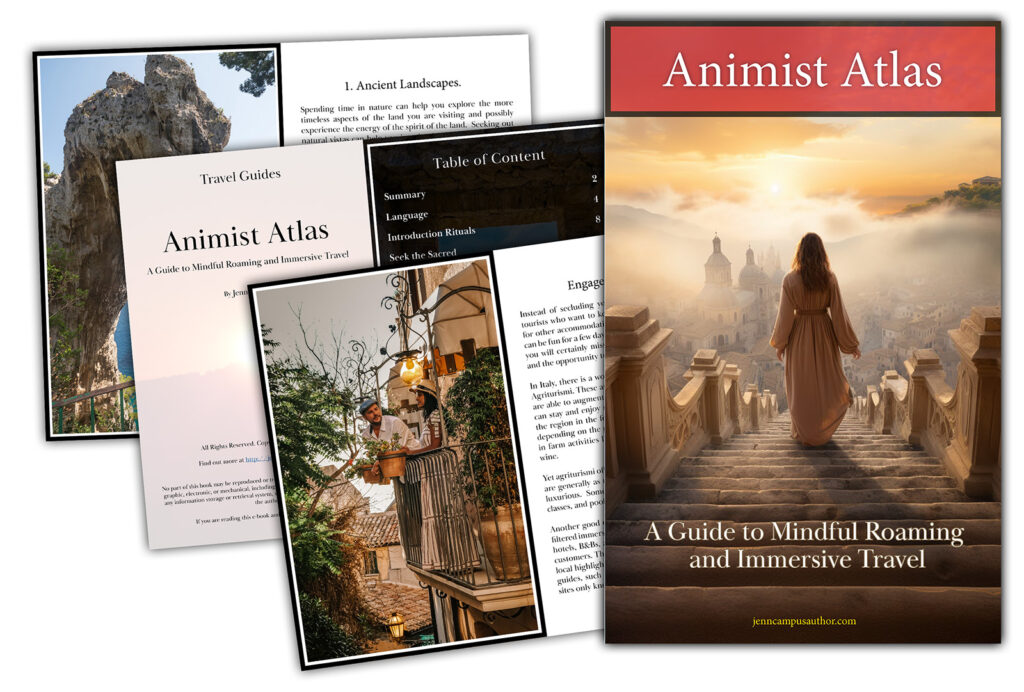
If all of this talk about Sardinia makes you want to travel, then I have another resource you might enjoy! This guide is a heartfelt compilation of my experiences, lessons, and tips for conscious, respectful, and immersive travel, born from my experiences traveling in the stunning landscapes of Sardinia and Sicily.
What I’m most excited to share with you is the guide’s heart – the emphasis on traveling with an animist perspective, seeing and honoring the land, its spirits, and its people as gracious hosts welcoming us into their home.
If you have enjoyed some of the free resources above, you might consider becoming a member of the Old Ways for Modern Days Research Library to access this wonderful resource for traveling with an open heart and respectful attitude—not just to the people we meet but to the places themselves. Join here.
Your support of the work helps me create more free and affordable resources.
Gracious thanks,
Jenn

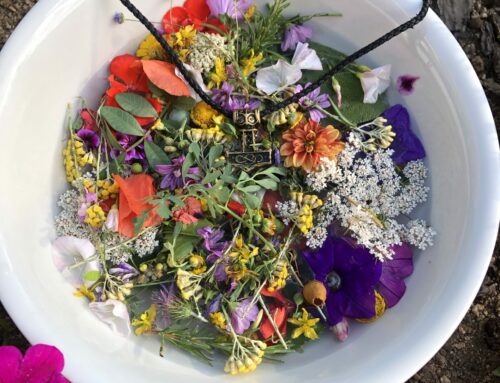
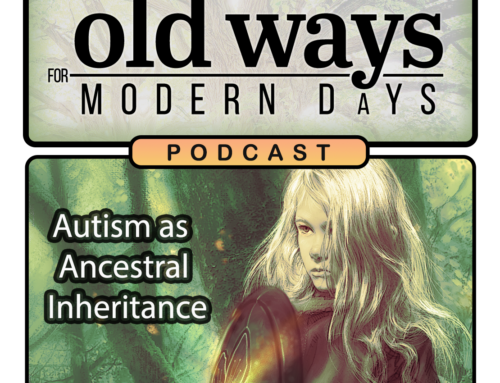
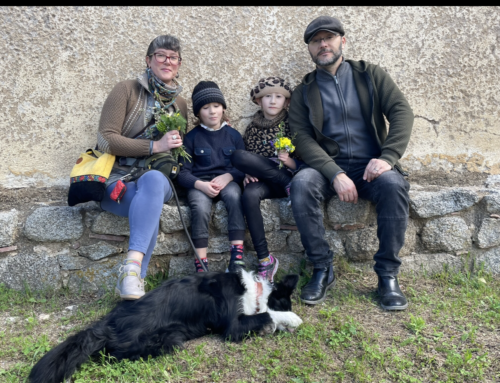



Leave a Reply